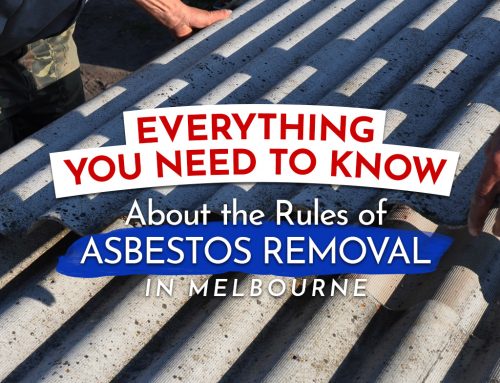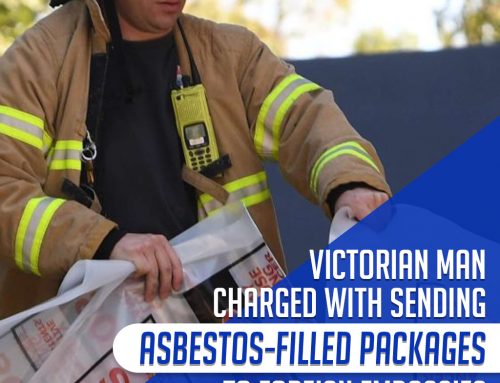It has long been established that asbestos can pose damaging effects to one’s health. Aside from the presence of the toxic fibre material in residential areas, asbestos exposure in the workplace also continue to become a pressing issue. Industries like construction, mining, and shipyards, are at a higher risk due to the nature of the work. Moreover, before the asbestos ban in December 2003, the material has been widely used in these fields due to its high-resistant properties.
But even up to the present day, workers are still potential victims of asbestos-related diseases due to the presence of asbestos in the worksite. This is why awareness is constantly being reinforced in efforts to protect employees. Read on to know the ways by which you can minimise the risk of asbestos exposure in the workplace.
6 Ways to Reduce the Risk of Asbestos in the Workplace
1. Don’t Disturb Asbestos-Containing Sources
One of the primary steps to reduce the risk of asbestos exposure in the workplace is to refrain from disturbing any source that asbestos-containing materials. While it can be quite difficult to determine the presence of asbestos by simply looking at the material, here are the common products or areas where asbestos will most likely be found.
Common Areas with Asbestos
- Insulating materials
- Heat-resistant fabrics
- Pipes, roofing, and furnaces
- Plaster compounds
- Ceilings
- Sidings on buildings
- Paints and adhesives
- Cement shingles
- Floor tiles and flooring adhesives
- Soundproofing applications
- Casings for electrical wirings
In cases where you are not sure whether or not something has asbestos, it is best to assume that it is until the material gets tested. Never drill, hammer, saw, scrape, cut, break, damage, or move anything unless proper assessment and control are implemented.
Note: If a source has been verified with asbestos, immediately display warning signs and barricades, especially when asbestos removal is being performed.
2. Refrain from Smoking, Eating or Drinking Near Asbestos-Contaminated Areas
Asbestos fibres can accumulate in the air, that is why the possibility of ingesting the toxic substance is high if your food and beverages are exposed to the area that possibly contains asbestos. Remember that asbestos fibres are microscopic in nature, which means they cannot be seen by the naked eye. However, once they get suspended in the air, they remain there for a long time and can easily be inhaled. The same is true for smoking, not to mention how it can decrease your lungs’ ability to cleanse. Moreover, the risk of acquiring lung cancer is considerably high when asbestos exposure and smoking are combined.
Note: Even the application of cosmetics should be prevented in places suspected to have asbestos.
3. Engage in Asbestos Awareness Training
In order to thoroughly understand asbestos and the potential damage that it can bring in the workplace, the employees need to undergo asbestos awareness training. According to the standards established by the Occupational Health Services Australia (OHSA), it is the property manager’s or employer’s duty to orient each employee before they are assigned for specific jobs. This must especially be done in cases where people can potentially be exposed to asbestos in the workplace or when the Permissible Exposure Limit (PEL) has been exceeded. The course must include the following information:
Information that Must be Included in Asbestos Awareness Training
- Damaging health effects of asbestos exposure in the workplace
- Work practices and engineering controls related to the job assignment
- Location, amount, methods of using, storage, and nature of operations that can increase the risk of asbestos exposure in the workplace
- Protective measures implemented by the company to minimise asbestos exposure in the workplace, including emergency and removal procedures, and personal protective equipment that must be used
- Proper use of equipment and clothing in the worksite
- Medical surveillance program (as mandated by OSHA)
Even the supervisors can also engage in training so they can be fully aware of their roles and duties. Furthermore, the training must be conducted regularly, advisably at least once every year.
4. Comply with the Regulations of Controlling Asbestos in the Workplace
Note that there are regulatory bodies that implement rules and prohibitions when it comes to asbestos management and control. Organisations such as WorkSafe Australia, National Association and Testing Authority, Department of Health, Environmental Protection Authority, etc., provide information regarding employer’s duties, workers’ rights and other asbestos concerns that need attention. Feel free to visit their websites for more details.
5. Use a Vacuum with HEPA Filter when Cleaning up Asbestos
Generally, it is not advisable to sweep, dust, shovel, vacuum, and other ways to dry clean up asbestos dust and debris as they only pave the way for releasing asbestos fibres in the air. Any pressurised air and compressed air tools are also prohibited. But some tools and equipment can help suppress the airborne dust, such as a vacuum designed with a HEPA filtration system or any wet cleaning method.
6. Always Wear Protective Clothing that can Easily be Discarded
It is necessary to wear outer clothing when immersing yourself in the worksite where asbestos might be present. This serves as a protective layer that can be easily cleaned or disposed of. In case asbestos exposure has occurred, thoroughly wash the affected body parts with water and soap. Also, never bring contaminated shoes and clothing to your home in order to prevent your family from inhaling asbestos fibres.
Knowing these ways can significantly help in reducing your risk of asbestos exposure to the worksite. But that should not stop there. Putting these tips into practice can ultimately benefit, not only you but even the lives of your colleagues. Whenever you suspect the presence of asbestos in the workplace, it is best to seek help from industry leaders like AWARE who can provide professional services to contain and remove asbestos.
Did you like this article? Visit our blog to learn more about cases of asbestos in the workplace.





